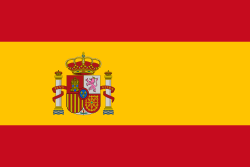Queen Crepe Myrtle, Pride of India
Binomial name
Lagerstroemia speciosa
Common names
Pride of India, Queen's Crape Myrtle, or Banaba
Description
Lagerstroemia speciosa, commonly known as Pride of India or Queen's Crape Myrtle, is a stunning deciduous tree that blooms with large, vibrant clusters of purple, pink, or white flowers during the summer and fall. Its glossy, dark green leaves turn a striking yellow or red in the fall, adding to its ornamental appeal. The tree’s bark peels in patches, revealing a smooth, mottled trunk that further enhances its beauty. Lagerstroemia speciosa is often used as a specimen tree, in gardens, or along streets, where its eye-catching blooms and attractive form create a dramatic effect.
Light requirements
This tree thrives in full sun, requiring at least 6 hours of direct sunlight per day for optimal growth and flowering. It can tolerate some partial shade but will not bloom as profusely in lower light conditions. A sunny location is essential for a healthy, well-flowered tree.
Soil preferences, including pH and drainage
Lagerstroemia speciosa prefers well-draining, slightly acidic to neutral soil with a pH of 6.0 to 7.5. It is adaptable to a wide range of soil types but flourishes in rich, loamy soil. Good drainage is crucial to avoid root rot, so it should be planted in a location where water can drain freely. If planting in a container, use a well-draining potting mix to ensure healthy root growth.
Water needs
This tree is moderately drought-tolerant once established but performs best with regular watering, especially during dry periods. Water deeply to ensure the soil is thoroughly moistened, but avoid overwatering as it can lead to root rot. During the growing season, water when the top inch of soil feels dry to the touch, reducing watering in the fall and winter when the tree's growth slows down.
| Size | 25 Gallon |





